Matthiessen State Park
- February 19, 2024
- 0 comment
Explore Matthiessen State Park’s stunning canyons, waterfalls, and trails. A nature lover’s paradise in Illinois. Matthiessen State Park, located in the heart of Illinois, is a treasure trove of natural beauty and geological wonders. This park, named after Frederick William Matthiessen, a prominent industrialist and philanthropist, offers visitors a unique blend of scenic canyons, enchanting waterfalls, and lush trails. Spanning over 1,938 acres, it serves as a sanctuary for a wide variety of plant and animal life, making it an ideal destination for nature enthusiasts and adventurers alike.
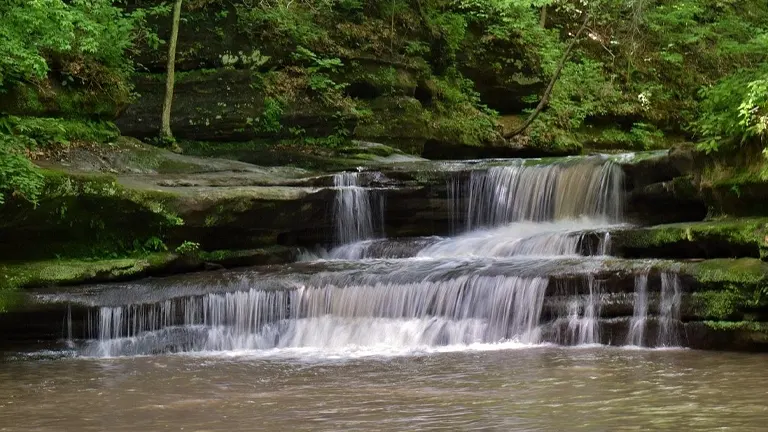
Whether you’re hiking through the depths of its canyons, picnicking by the serene streams, or exploring its rich biodiversity, Matthiessen State Park promises an immersive experience into the heart of nature’s artistry.
Characterizing Features of Matthiessen State Park
Matthiessen State Park, a pristine natural reserve located in Illinois, is celebrated for its unique geological structures, lush landscapes, and diverse habitats. Key features that distinguish the park include:
- Canyons and Waterfalls: Carved by ancient streams, the park’s canyons and waterfalls are a central attraction, offering stunning views and a tranquil ambiance. The dappled sunlight through the foliage, combined with the soothing sound of cascading water, creates a mesmerizing experience for visitors.
- Trails: A network of trails meanders through the park, inviting hikers of all skill levels to explore its beauty. These trails offer access to the park’s diverse landscapes, including dense forests, open prairies, and wetland areas, providing a comprehensive nature immersion experience.
- Rock Formations: The park is notable for its fascinating rock formations, including the iconic “Giant’s Bathtub,” which highlight the area’s geological history and provide unique photographic opportunities.
History of Matthiessen State Park
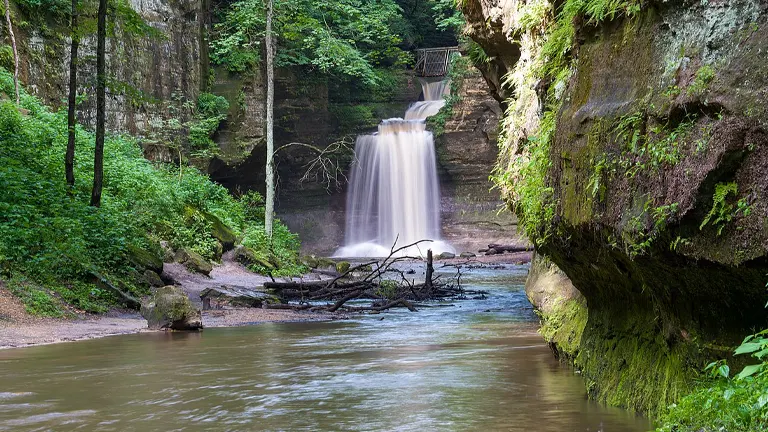
Matthiessen State Park’s history is as rich and varied as its landscapes. Originally the private estate of Frederick William Matthiessen, the land was donated to the state for public enjoyment in the late 1940s. Since then, it has been a haven for nature lovers, historians, and outdoor enthusiasts. The park’s name honors its benefactor, reflecting his legacy of conservation and passion for the natural world. Over the years, Matthiessen State Park has evolved, with enhancements to its trails and facilities, but its wild, untamed beauty remains preserved, a testament to Illinois’ natural heritage.
Unique Ecosystem of Matthiessen State Park
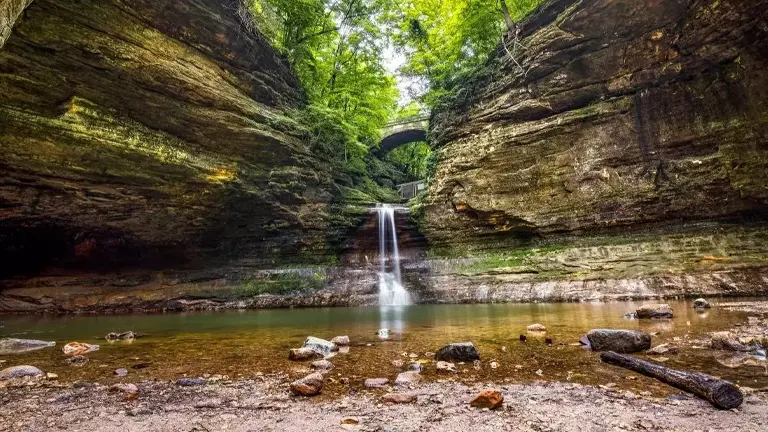
The park’s ecosystem is a vibrant tapestry of flora and fauna, supported by its varied topography and microclimates. It serves as a sanctuary for a wide array of species, some of which are rare or unique to the area. The rich biodiversity includes dense forests of oak and hickory, expansive prairies filled with wildflowers and grasses, and serene wetlands that provide critical habitats for amphibians, reptiles, and migratory birds. This diversity not only contributes to the park’s ecological significance but also enhances its appeal as a destination for wildlife observation and nature study.
Location of Matthiessen State Park

Situated in LaSalle County, near the small town of Utica, Illinois, Matthiessen State Park is easily accessible from major cities like Chicago, located approximately 100 miles to the northeast. Its proximity to other natural attractions, including Starved Rock State Park, makes it a popular choice for day trips and weekend getaways. The park’s location amidst the Illinois River Valley adds to its scenic beauty, offering visitors a peaceful retreat from the hustle and bustle of city life.
Conservation and Recreation in Matthiessen State Park
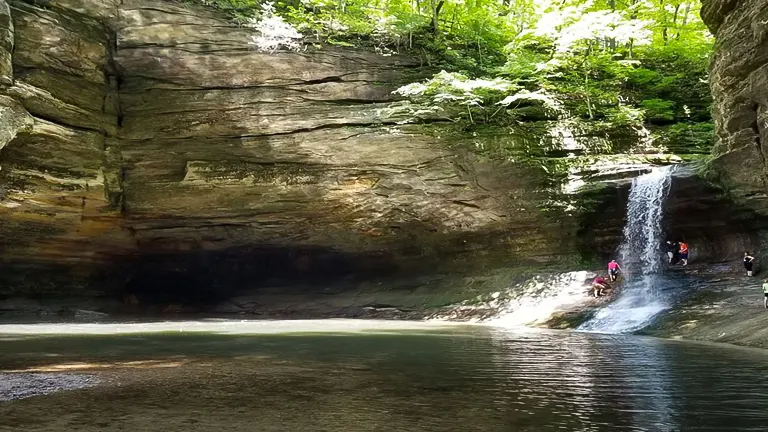
Conservation and recreation go hand in hand at Matthiessen State Park, serving as twin pillars that ensure the park’s natural beauty and biodiversity are preserved for future generations while providing the public with opportunities for outdoor activities and environmental education. The park’s management employs sustainable practices to protect its ecosystems, from restoring native plant species to controlling erosion. Recreational activities, such as hiking, bird watching, and photography, are encouraged within designated areas to minimize human impact on sensitive habitats. Through these efforts, the park not only conserves its natural resources but also fosters a deeper appreciation for the environment among visitors.
Diverse Vegetation and Plant Species in Matthiessen State Park
The botanical diversity within Matthiessen State Park is remarkable, featuring a wide range of vegetation and plant species that contribute to its lush landscapes and ecological richness. Notable examples include:
- Prairie Plants: The park’s prairies are ablaze with color during the warmer months, showcasing species like the Purple Coneflower (Echinacea purpurea) and the Prairie Dock (Silphium terebinthinaceum), which attract a variety of pollinators.
- Forest Flora: Dense woodlands are dominated by towering oaks (Quercus spp.) and hickories (Carya), under which a diverse understory thrives, including the Wild Ginger (Asarum canadense) and the Jack-in-the-pulpit (Arisaema triphyllum).
- Wetland Vegetation: The park’s wetlands support species adapted to moist conditions, such as the Cattail (Typha) and the Swamp Milkweed (Asclepias incarnata), vital for aquatic wildlife and water filtration.


Fauna in Matthiessen State Park
Matthiessen State Park is a sanctuary for a wide array of wildlife, offering shelter and sustenance to diverse species, including:
- Birds: The park is a haven for birdwatchers, with species like the Red-tailed Hawk (Buteo jamaicensis) and the Great Blue Heron (Ardea herodias) frequently spotted among the treetops and waterways.
- Mammals: White-tailed deer (Odocoileus virginianus), raccoons (Procyon lotor), and foxes (Vulpes vulpes) are among the mammals that inhabit the park, coexisting within its varied landscapes.
- Reptiles and Amphibians: The park’s wetlands and water bodies are home to reptiles and amphibians like the Eastern Box Turtle (Terrapene carolina carolina) and the American Toad (Anaxyrus americanus), contributing to the park’s ecological diversity.
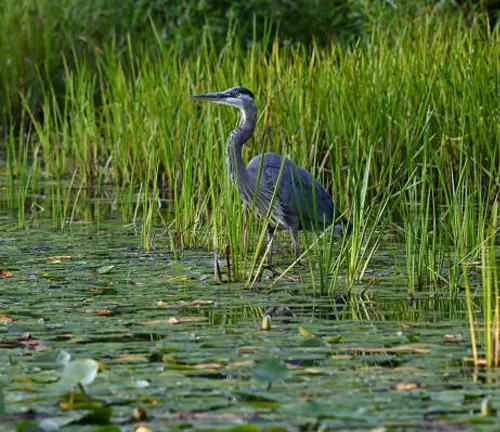

Attractions in Matthiessen State Park
Matthiessen State Park offers a plethora of attractions that draw visitors from near and far, including:

Dells Area: The Dells area of Matthiessen State Park is a dramatic landscape of canyons and waterfalls carved out by glacial meltwater and erosion over thousands of years. This area offers a glimpse into the natural forces that shape our world, showcasing the power of water in creating and modifying landscapes. Visitors can explore the upper and lower dells, each presenting unique geological features and ecosystems.
Fortress Rock: A towering sandstone bluff, Fortress Rock is a testament to the enduring strength of nature. This impressive formation provides insight into the sedimentary processes that have sculpted the park’s landscape over millions of years. Its commanding presence also serves as a habitat for various plants and animals, demonstrating the role of geological structures in supporting biodiversity.
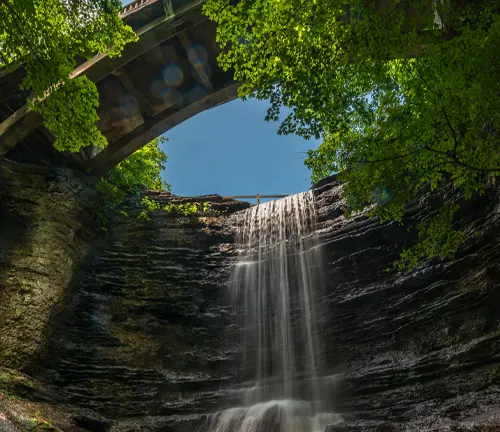
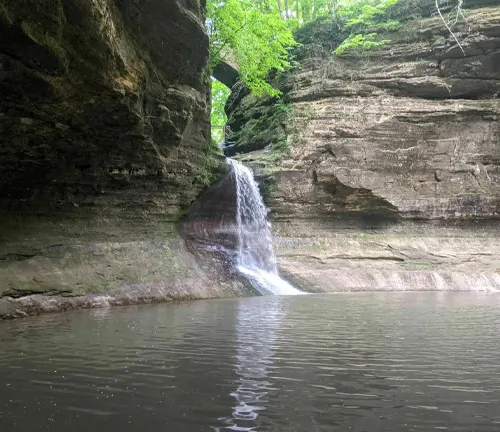
Cascade Falls: One of the park’s most picturesque spots, Cascade Falls is a serene waterfall that flows over a rocky ledge into a clear, shallow pool below. This natural feature is not only a beautiful sight but also an example of erosion in action, as the flowing water gradually wears away the rock face, altering the waterfall’s shape over time.
Lake Falls: Another captivating waterfall within the park, Lake Falls tumbles down into a deep canyon, creating a mesmerizing display of water’s natural elegance and power. This area highlights the importance of water in carving out the park’s canyons and valleys, offering lessons on the geological processes that define and continuously reshape our environment.

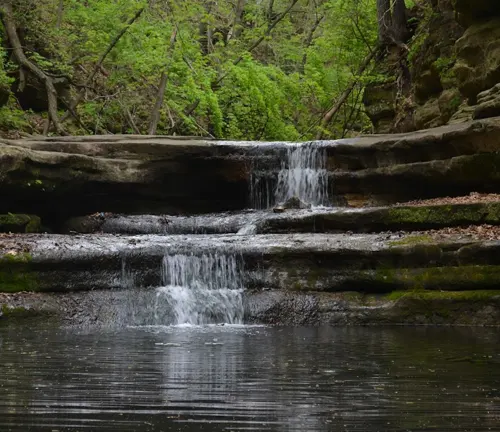
Giant’s Bathtub: This unique geological feature resembles a large, natural bathtub filled with water from the park’s streams. The Giant’s Bathtub illustrates the concept of potholes or plunge pools, which form when swirling water carrying sand and rocks creates a circular depression in the bedrock. It’s a fascinating example of how even small, repetitive actions can have significant impacts over time, contributing to the park’s diverse landscape.
Wishing Well: A deep, clear pool fed by springs and surrounded by lush vegetation, the Wishing Well is named for its seemingly bottomless appearance and the coins often tossed in by visitors making wishes. This feature serves as a natural spring, demonstrating the park’s role in the hydrological cycle and the importance of preserving natural water sources.

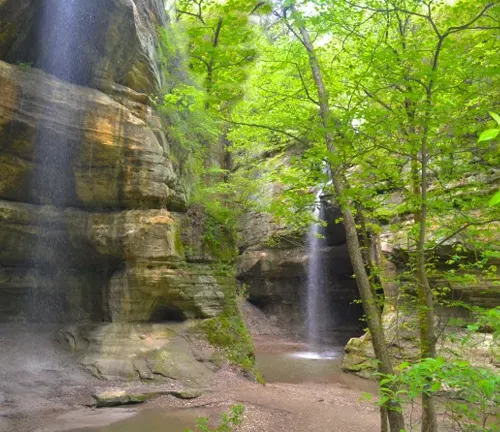
Tonti Canyon: Named after Henri de Tonti, a key figure in the early exploration of Illinois, Tonti Canyon is a narrow gorge with steep walls and a seasonal waterfall. Exploring this canyon offers insights into the area’s history and the exploratory challenges faced by early settlers, while also highlighting the ongoing processes of erosion and sediment deposition that shape such landscapes.
Recreational Activities in Matthiessen State Park
Matthiessen State Park is a haven for outdoor enthusiasts, offering a variety of recreational activities that cater to all ages and interests. Key activities include:
- Hiking: The park features several miles of well-marked trails that traverse through its stunning landscapes, including dense forests, prairies, and around dells. Trails vary in difficulty, catering to both casual walkers and experienced hikers seeking more challenging routes. Hiking in Matthiessen State Park provides an excellent opportunity to witness the seasonal changes, observe wildlife, and enjoy the tranquility of nature.
- Picnicking: With numerous designated picnic areas equipped with tables and grills, the park offers the perfect setting for a family outing or a peaceful meal in the great outdoors. These areas provide a comfortable space for visitors to relax and enjoy the park’s scenic views, making for a memorable day trip.
- Bird Watching: Matthiessen State Park is a haven for bird enthusiasts, with its diverse habitats attracting a variety of bird species throughout the year. The park’s ecosystems support both resident and migratory birds, offering bird watchers the chance to spot species such as woodpeckers, warblers, and hawks. Bringing a pair of binoculars and a field guide will enhance this educational experience.
- Photography: The unique geological features, vibrant plant life, and abundant wildlife make Matthiessen State Park a fantastic location for photography. Whether you’re an amateur photographer or a professional, the park’s natural beauty provides endless inspiration for capturing stunning landscapes, intimate macro shots, and everything in between.
- Geocaching: For those looking for a modern treasure hunt, geocaching in Matthiessen State Park adds an exciting and educational twist to exploring. Participants use GPS devices to locate hidden containers, called geocaches, throughout the park. It’s a fun way to learn about navigation and geography while discovering hidden corners of the park.
- Horseback Riding: The park offers specific trails designated for horseback riding, allowing equestrians to explore its beauty from a different perspective. Riding through the park’s trails offers a unique bonding experience with the horse while enjoying the serene environment. Note that visitors must bring their own horses, as the park does not provide horse rentals.
- Rock Climbing and Rappelling: For the adventurous, certain areas of Matthiessen State Park are designated for rock climbing and rappelling. These activities offer a thrilling way to engage with the park’s dramatic sandstone formations and require proper equipment and adherence to safety guidelines.
- Winter Sports: During the winter months, Matthiessen State Park transforms into a wonderland for cold-weather sports. Visitors can enjoy cross-country skiing and snowshoeing along the trails, offering a peaceful way to explore the snow-covered landscape. It’s a great way to stay active in the winter while enjoying the park’s seasonal beauty.

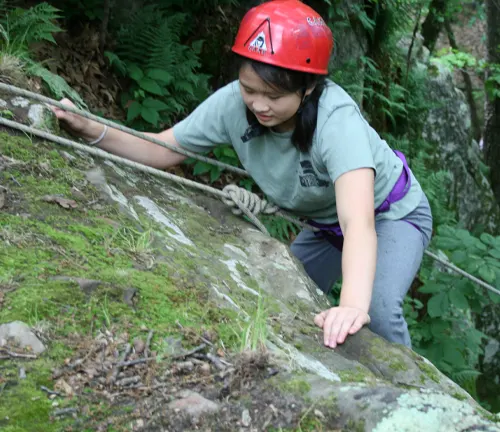
Different Facilities and Amenities in Matthiessen State Park
To enhance the visitor experience, Matthiessen State Park boasts a range of facilities and amenities, including:
- Visitor Center: Offers educational exhibits about the park’s natural and cultural history, alongside information and resources for guests.
- Camping Sites: For those wishing to extend their stay, the park provides camping facilities that range from basic tent sites to RV accommodations with modern amenities.
- Playgrounds: Children’s playgrounds are scattered throughout the park, providing entertainment for younger visitors.
Tips and Advice for Visiting Matthiessen State Park
To make the most out of a visit to Matthiessen State Park, consider the following tips:
- Wear Appropriate Footwear: The park’s terrain includes rugged trails, steep stairs, and rocky areas. Wearing sturdy, comfortable hiking shoes or boots can prevent slips and falls, making your exploration safer and more enjoyable.
- Check the Weather: Before heading out, check the local weather forecast. Weather conditions can change rapidly, and being prepared will help you enjoy your visit regardless of the weather. Consider packing rain gear or extra layers if needed.
- Stay Hydrated: Bring plenty of water, especially during warmer months. Exploring the outdoors and hiking can quickly lead to dehydration. There may not be accessible water sources throughout the park, so carrying your own is crucial.
- Respect Wildlife: Matthiessen State Park is home to a diverse range of wildlife. Maintain a safe distance from animals, do not feed them, and keep pets on a leash to protect both the wildlife and your own safety.
- Leave No Trace: Help preserve the park’s natural beauty for future visitors by following Leave No Trace principles. Pack out all trash, stay on designated trails to prevent erosion, and avoid picking plants or disturbing natural features.
- Plan Your Visit: Familiarize yourself with the park’s layout, attractions, and available facilities before you arrive. Knowing the locations of trails, restrooms, picnic areas, and parking lots can enhance your visit and reduce time spent looking for amenities.
- Capture Memories, Not Souvenirs: While it may be tempting to take a piece of the park home with you, remember that every rock, leaf, and artifact contributes to the park’s ecosystem and heritage. Take photos and leave everything else as you found it.
- Prepare for Limited Cell Service: In some areas of the park, cell phone service may be limited or unavailable. Plan accordingly by downloading maps and any necessary information ahead of time. Inform someone of your plans, especially if you’re venturing into more remote areas of the park.
- Use Insect Repellent: Depending on the season, mosquitoes, ticks, and other insects can be prevalent in the park. Using insect repellent can help protect you from bites and related diseases.
- Visit During Off-Peak Hours: To avoid crowds, especially during the busy summer months, consider visiting on weekdays or early in the morning. Not only will you enjoy a more peaceful experience, but wildlife sightings are also more likely during these quieter times.
Recommendation
For anyone seeking an escape into nature, Matthiessen State Park is an ideal destination. Its rich natural and cultural history, combined with its varied landscapes and recreational opportunities, make it a place worth exploring. Whether you’re an avid hiker, a bird watcher, or simply in need of a peaceful retreat, the park offers a refreshing experience for all.
Conclusion
Matthiessen State Park is a jewel in Illinois’ crown of natural wonders. With its stunning geological features, rich biodiversity, and myriad recreational opportunities, it represents the perfect marriage of conservation and outdoor adventure. This park is not just a place to visit but an experience to be cherished, offering endless discoveries for those willing to explore its depths.
FAQs
- What is the best time of year to visit Matthiessen State Park?
The park is beautiful and accessible year-round, but the best time to visit is during the spring and fall. Spring offers a chance to see the wildflowers and waterfalls at their peak, while fall features stunning foliage colors. Summer is great for lush greenery, though it can be hot, and winter offers serene snow-covered landscapes, ideal for winter sports. - Are there any fees to enter Matthiessen State Park?
No, there are no entrance fees to visit Matthiessen State Park. It is open to the public free of charge, making it an accessible option for outdoor recreation and exploration. - Can I bring my dog to Matthiessen State Park?
Yes, dogs are allowed in the park but must be kept on a leash at all times. It’s important to be considerate of wildlife and other visitors by cleaning up after your pet. - Is Matthiessen State Park suitable for young children?
Yes, the park is family-friendly and offers several activities suitable for young children, including easy hiking trails, picnicking, and playground areas. Always supervise children closely, especially near cliffs and water features. - Are there camping facilities available within Matthiessen State Park?
Matthiessen State Park itself does not have camping facilities, but nearby Starved Rock State Park offers camping options ranging from tent sites to cabins. Visitors to Matthiessen can easily find accommodations there or in the surrounding area. - What should I wear when visiting Matthiessen State Park?
Wear comfortable, weather-appropriate clothing and sturdy footwear, especially if you plan to hike. The trails can be rocky and uneven, so good hiking shoes or boots are recommended. Don’t forget to bring sunscreen, insect repellent, and a hat during warmer months. - Are the trails at Matthiessen State Park difficult to hike?
The park offers a range of trails from easy to moderate in difficulty. Some areas may involve steep stairs or uneven terrain, so it’s important to choose a trail that matches your comfort and fitness level. Trail maps available at the visitor center can help you decide. - What precautions should I take when visiting the park?
Always stay on marked trails to protect both the park’s natural habitats and yourself. Bring plenty of water, especially in hot weather, and check the weather forecast before your visit. If you’re visiting alone, let someone know your plans. Lastly, remember to take your trash with you to keep the park clean.
Matthiessen State Park is a natural sanctuary, offering serene beauty and outdoor adventure. It’s a place where memories are made and the spirit of exploration thrives. Visit once, and you’ll be drawn back by its captivating landscapes and tranquil charm.

Benjamin Brooks
Forestry AuthorGreetings! I'm Benjamin Brooks, and my journey over the past 15 years has revolved around the fascinating realms of content creation, expertise in snow clearing, and the intricate world of lumberjacking and landscaping. What began as a simple curiosity about the natural world and heavy machinery has evolved into a passionate profession where my love for crafting words intertwines seamlessly with my lumberjacking and garden skills.

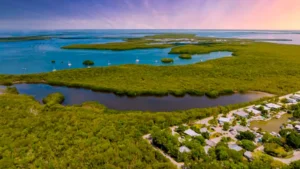
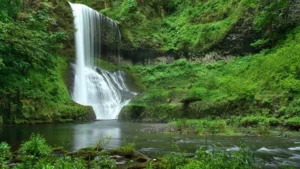



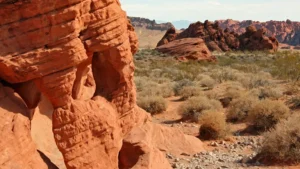
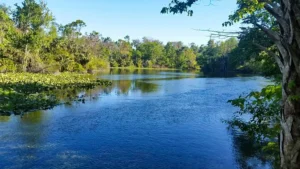
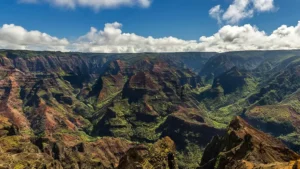

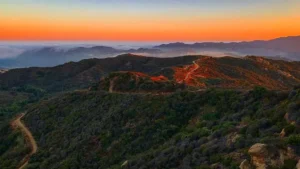
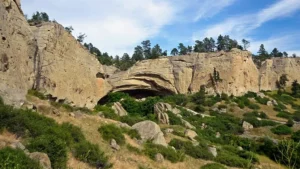

Leave your comment